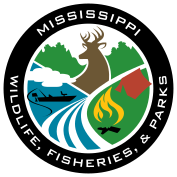
If you have questions about purchasing a license call 1-800-5GO-HUNT.
Written by: Chandler Strickland
Edits by: Pierce Young
The number one driver of wild turkey populations is recruitment. The two major factors that play into recruitment of turkeys are nest success and poult survival. The process, from a hen laying and incubating her eggs to the poults becoming capable of flight, spans about 5-6 weeks. During the final two weeks of this process, the poults hatch and become active on the ground. Maintaining sufficient brood-rearing habitat on the landscape is crucial for the survival of poults before they are able to fly.
Brood habitat is a specialized environment where wild turkey hens raise their poults, characterized by a specific vegetation structure and abundant foraging opportunities for insects. The ideal vegetation structure is lush and low-growing herbaceous plants, forming an umbrella-like canopy with bare ground beneath. This provides hens with a vantage point to watch over the area while poults can move underneath, staying largely undetected and protected from predators, even from above. This vegetation also attracts a variety of insects, which form the majority of a poults' high-protein diet during the first few weeks of development. This protein is important for growth, and the more access to protein rich bugs, the quicker they can mature to a level where they can fly. This greatly impacts poult survival. Also, the shorter the distance a hen travels from nesting areas to brooding areas, the greater the chances of survival for poults. Therefore, it's ideal to manage for denser nesting areas positioned next to open spaces that are managed as brood-rearing habitat.
Disturbance in areas receiving ample light, such as fields or thinned timber, is the primary management tool for wild turkey recruitment. A best management practice is to rotate early successional habitats by disturbing at least one-third of your property each year. Typically, 1 to 2 years after disturbance provides the optimal conditions for brooding habitat. Disturbance can be achieved through methods such as prescribed fire, disking, timber harvesting, and selective herbicide treatments. Among these, prescribed fire should be considered the most cost-effective management tool for turkey conservation. Fire will be essential in resetting plant communities that turkey populations need to be successful long-term. Additionally, open areas can be planted with food plots, and well-maintained clover plots, can provide ideal brood habitat, offering plentiful foraging opportunities for insects.
If you're looking to boost wild turkey populations on your property, prioritizing brood-rearing habitat management is essential. For more information on turkey management, visit our website at
mdwfp.com/wildlife-management-info
and
Watch this video discussing nesting and brood rearing habitat